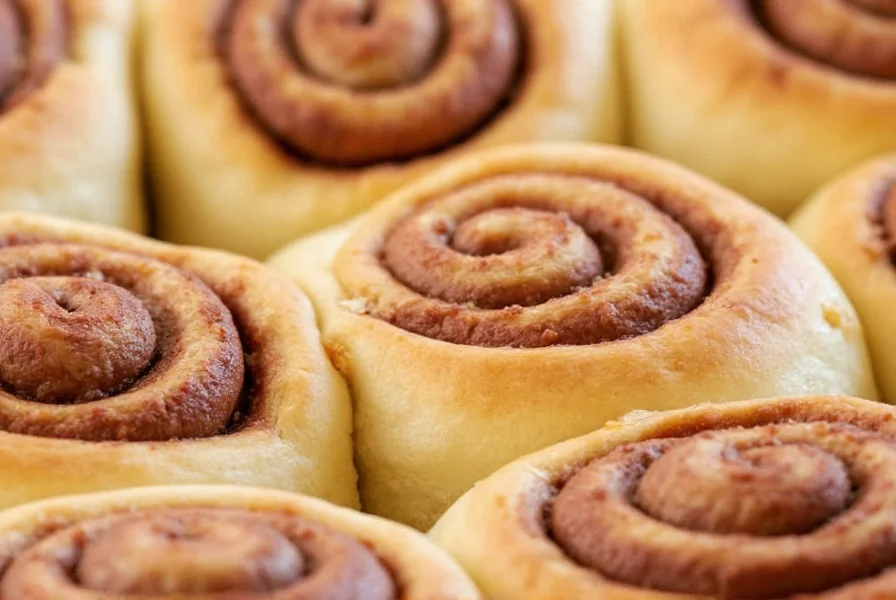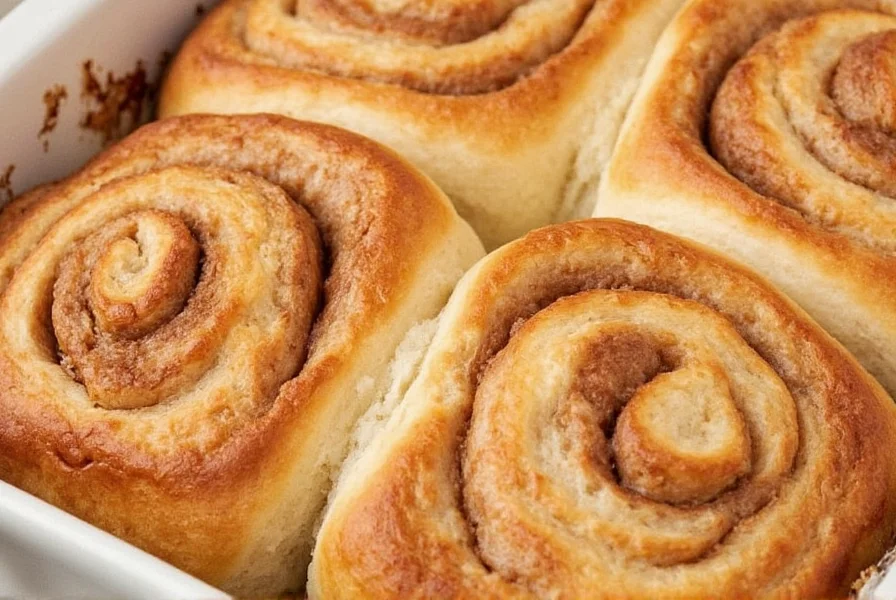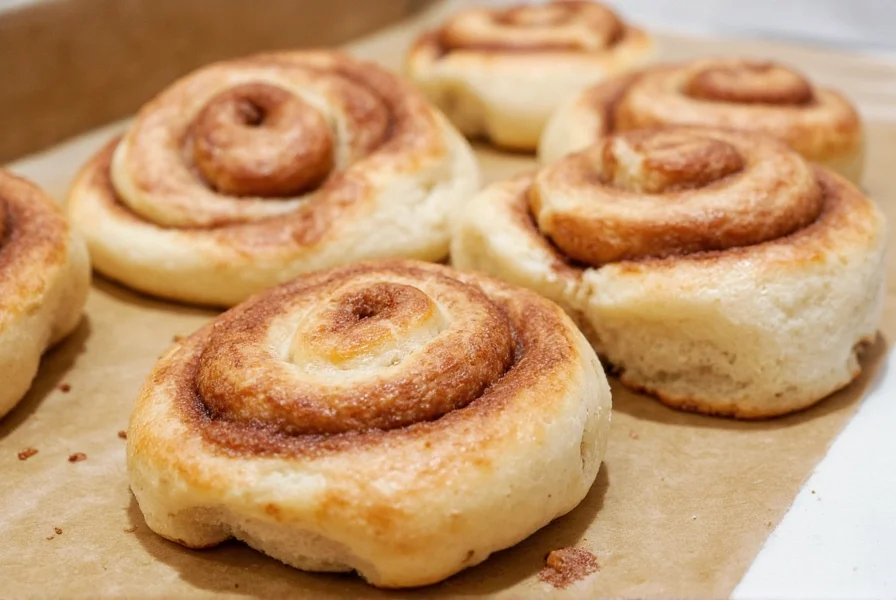Nothing beats the aroma of freshly baked cinnamon rolls filling your kitchen. This easy homemade cinnamon rolls recipe delivers bakery-quality results with soft, pillowy dough and a perfectly balanced filling that won't overpower the delicate bread. After testing dozens of variations, we've perfected the ideal ratio of cinnamon to sugar and developed foolproof techniques that guarantee success every time.
What Makes These Cinnamon Rolls Exceptionally Tasty
The secret to truly delicious cinnamon rolls lies in three critical elements: dough texture, filling composition, and baking precision. Unlike many recipes that produce dense or overly sweet rolls, our method focuses on creating light, airy buns with a subtle cinnamon flavor that complements rather than overwhelms.
Professional bakers agree that the ideal cinnamon roll filling ratio is 1 cup brown sugar to 2 tablespoons cinnamon. Too much cinnamon creates bitterness, while insufficient sugar fails to caramelize properly during baking. Our recipe includes a touch of nutmeg and cardamom to enhance complexity without making the rolls taste medicinal.

Complete Ingredient List
| Ingredient | Measurement | Notes |
|---|---|---|
| All-purpose flour | 4½ cups (562g) | Spoon and level for accuracy |
| Warm milk | 1 cup (240ml) | 105-110°F (40-43°C) |
| Active dry yeast | 2¼ teaspoons (7g) | Fresh package preferred |
| Granulated sugar | ⅓ cup (67g) | For dough |
| Unsalted butter | ½ cup (113g) | Melted and cooled |
| Egg | 1 large | Room temperature |
| Salt | 1½ teaspoons |
Step-by-Step Preparation Guide
Follow these detailed instructions for perfect homemade cinnamon rolls every time:
- Activate the yeast: Combine warm milk, 1 tablespoon sugar, and yeast in a small bowl. Let sit for 5-7 minutes until foamy. If it doesn't bubble, your yeast is dead—start over with fresh yeast.
- Mix the dough: In a large bowl, combine flour, remaining sugar, salt, melted butter, egg, and yeast mixture. Mix until a shaggy dough forms.
- Knead properly: Turn dough onto lightly floured surface and knead for 8-10 minutes until smooth and elastic. Alternatively, use a stand mixer with dough hook for 6-7 minutes.
- First rise: Place dough in greased bowl, cover with damp cloth, and let rise in warm place for 1-1.5 hours until doubled in size.
- Prepare filling: Mix 1 cup packed brown sugar, 2 tablespoons cinnamon, ¼ teaspoon nutmeg, and ¼ teaspoon cardamom in small bowl.
- Roll and fill: Roll risen dough into 18x12 inch rectangle. Spread ⅓ cup softened butter evenly over surface, then sprinkle with filling mixture.
- Roll tightly: Starting from long edge, roll dough into tight log. Pinch seam to seal.
- Cut carefully: Using dental floss or serrated knife, cut into 12 equal pieces. This prevents squishing the rolls.
- Second rise: Place rolls in greased 9x13 inch pan, cover, and let rise 45-60 minutes until puffy.
- Bake perfectly: Preheat oven to 350°F (177°C). Bake for 22-25 minutes until golden brown but not overbaked.

Critical Baking Tips for Success
Achieving soft and fluffy cinnamon buns requires attention to detail at every stage:
- Dough temperature matters: Keep dough between 75-80°F (24-27°C) during rising. Too cold slows yeast activity; too warm kills yeast.
- Don't skip the floss trick: Cutting rolls with dental floss prevents deformation and ensures clean swirls.
- Watch baking time carefully: Overbaking by even 2-3 minutes dries out rolls. They should register 190°F (88°C) internally.
- Cool properly: Let rolls cool 15 minutes before frosting to prevent melting.
Cream Cheese Frosting Recipe
Our perfect cream cheese frosting for cinnamon rolls balances sweetness with tang:
- 8 oz cream cheese, softened
- ½ cup unsalted butter, softened
- 2 cups powdered sugar
- 1 teaspoon vanilla extract
- 2-3 tablespoons milk
- Pinch of salt
Beat cream cheese and butter until smooth. Gradually add powdered sugar, then vanilla, milk, and salt. Adjust milk for desired consistency—thicker for piping, thinner for drizzling.
Troubleshooting Common Problems
Even experienced bakers encounter issues with cinnamon roll baking. Here's how to fix them:
- Dense rolls: Usually caused by too much flour or dead yeast. Measure flour properly and test yeast freshness.
- Filling leaking out: Apply butter evenly but sparingly, and roll dough tightly without stretching.
- Burnt bottoms: Place pan on middle rack and use light-colored metal pan (not glass or dark metal).
- Dry rolls: Overbaking or too much flour. Check oven temperature with separate thermometer.
Variations to Try
Once you've mastered the basic cinnamon rolls recipe, experiment with these delicious twists:
- Apple cinnamon rolls: Add ½ cup finely diced apples to the filling
- Sticky buns: Place pecans and caramel sauce in bottom of pan before adding rolls
- Orange zest rolls: Add 1 tablespoon orange zest to dough for citrus notes
- Whole wheat version: Substitute 1 cup all-purpose flour with whole wheat
Storage and Reheating Instructions
For best results with your homemade cinnamon rolls:
- Fresh: Consume within 24 hours for optimal texture
- Room temperature: Store covered for up to 2 days
- Refrigerated: Keep in airtight container for up to 5 days
- Reheating: Microwave individual rolls for 15-20 seconds or warm in 300°F oven for 5 minutes
- Freezing: Freeze unfrosted rolls for up to 3 months. Thaw, rise, then bake as directed.
Frequently Asked Questions
Can I make cinnamon rolls ahead of time?
Yes! Prepare rolls through step 8, then place in greased pan, cover tightly, and refrigerate overnight. Remove from fridge 1-2 hours before baking to allow proper rising. This cinnamon roll baking temperature guide ensures perfect results with make-ahead convenience.
Why did my cinnamon rolls come out flat?
Flat rolls typically result from over-rising (more than doubled in size) or too-warm dough during the second rise. The ideal how to make soft and fluffy cinnamon buns technique requires watching the dough's volume, not just the clock. Rolls should look puffy but still hold their shape when gently shaken.
Can I use instant yeast instead of active dry?
Yes, you can substitute instant yeast 1:1 for active dry yeast. The main difference is instant yeast can be mixed directly with dry ingredients without proofing in liquid first. This easy homemade cinnamon rolls recipe works with either type, but always check yeast expiration dates for best results.
How do I prevent the filling from leaking out?
To keep your best cinnamon roll filling ratio contained, spread softened butter (not melted) evenly over the dough, leaving a ½-inch border. Roll tightly from the long edge without stretching the dough, and pinch the seam closed. Chilling the rolled log for 15 minutes before cutting also helps maintain structure.
Can I make these rolls without a stand mixer?
Absolutely! This tasty cinnamon rolls recipe can be made entirely by hand. Mix ingredients in a large bowl with a wooden spoon, then turn onto floured surface for kneading. Hand-kneading takes 8-10 minutes until the dough becomes smooth and passes the windowpane test (stretches thin without tearing).











 浙公网安备
33010002000092号
浙公网安备
33010002000092号 浙B2-20120091-4
浙B2-20120091-4